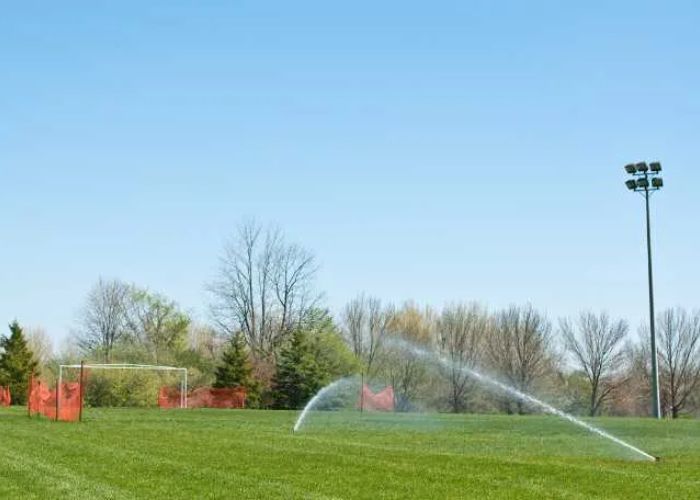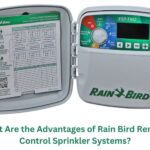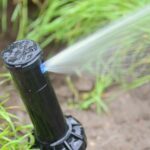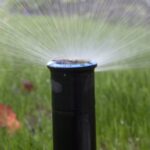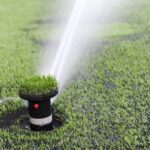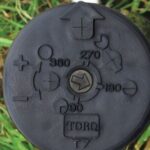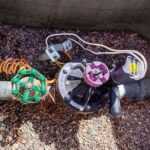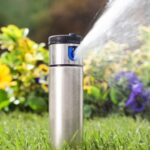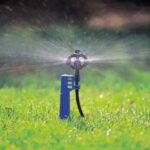As an irrigation specialist with over 7 years of experience installing and programming irrigation systems on golf courses, I often get asked – how can we optimize our irrigation water usage?
With rising water costs and increased focus on conservation, this question is more relevant than ever for golf course superintendents and owners. And the irrigation controller sits at the heart of any optimization strategy.
In my experience, Hunter golf irrigation controllers, like the ICC2 and Pro-C models, provide superintendents the tools they need to reduce water waste while maintaining healthy playing conditions. Here’s How Can Hunter Golf Irrigation Controllers Optimize Water Usage?
Precise Programming for Each Zone’s Needs
Hunter controllers allow you to set different watering schedules, run times, and cycles for each zone based on factors like sun exposure, soil type, and grass variety. By custom tailoring watering to each zone’s specific needs, you avoid over or under-watering certain areas.
For example, shaded zones with bentgrass may need less frequent, shorter waterings than a full sun zone with Bermuda grass. Dialing in each zone is crucial for water savings and playability.
Soil Moisture Sensor Integration
Hunter controllers work with soil moisture sensors to measure actual soil moisture levels and automatically adjust watering schedules up or down based on real-time conditions.
Sensors eliminate guesswork and overwatering by enabling the controller to irrigate based on the moisture levels that grass actually needs. In my experience, this can achieve 20-30% water savings versus conventional time-based schedules.
I always advise superintendents to install soil sensors in representative zones as a smart way to optimize usage across the course.
Advanced Weather Tracking Capabilities
Hunter golf irrigation controllers can integrate with onsite weather stations as well as regional ET weather data using the Solar Sync sensor. This gives the controller daily updates on rain, wind, temperature, solar radiation and more.
The controller then applies algorithmic calculations to analyze how these conditions impact evapotranspiration (ET) rates and soil moisture depletion on your unique site. It automatically adjusts the watering program to replace only the moisture that the environment extracts each day – no more, no less.
This ET-based smart watering achieves high efficiency tailored to local climate patterns. In cool and rainy stretches, run times are scaled back. During hot, dry spells, watering increases to match plant needs.
Read More:- What Are the Key Features of Rain Bird Golf Sprinkler Systems?
Easy Remote Monitoring and Adjustments
With Hunter’s Hydrawise software platform, I can monitor controller status, moisture levels, and weather conditions from my smartphone or computer. This allows me to catch problems early and make adjustments on the fly without driving to each controller.
If heavy rains are forecast, for example, I can remotely reduce watering levels ahead of time to conserve water. Or if I notice soil moisture dropping faster than expected, I can bump up run times as needed. This type of responsive management optimizes efficiency.
Comprehensive Usage Data for Targeted Improvements
Usage reports from Hunter controllers provide detailed water consumption data for the entire course as well as zone-by-zone and program-level breakdowns.
Analyzing this data allows me to pinpoint where heaviest usage occurs, compare similar zones, and quantify savings from programming changes. I use consumption metrics to set benchmarks and target underperforming areas for improvement.
Detailed usage insights are invaluable for promoting responsible water stewardship across the golf course over the long run.
Simplified Maintenance and Expansion
With their modular designs, built-in surge protection, and hassle-free diagnostics, Hunter golf controllers require very little ongoing maintenance. I can also easily expand station count whenever additional zones are added.
According to hunterindustries.com, Less maintenance and seamless scalability translate into lower operating costs over time compared to some other controllers. And superintendents can upgrade to add advanced features like two-wire technology without replacing the entire unit.
The Bottom Line
After years of evaluating irrigation performance on many golf courses, I firmly believe that Hunter’s ICC2 and Pro-C controllers provide the best combination of precision control, intelligent water management, and actionable data to drive ongoing efficiency.
Read More:- What Makes Hunter Golf Irrigation Controllers Stand Out?
By allowing superintendents to dial in watering to the needs of each zone, automatically adjust schedules based on weather and soil data, and monitor usage metrics from anywhere, Hunter golf controllers optimize water usage while maintaining healthy turf conditions.
The numbers don’t lie – courses using these controllers combined with soil sensors and ET tracking capabilities achieve substantial, long-term reductions in water use compared to traditional irrigation methods. And responsible water stewardship is a win for budgets, playability, and the environment alike.
If you have questions about optimizing irrigation water usage on your golf course, don’t hesitate to drop me a line. I’m always happy to chat more about best practices and real-world solutions. I hope you like reading “How Can Hunter Golf Irrigation Controllers Optimize Water Usage?”

Mohit Sharma is an experienced sports product reviewer with over 7 years of expertise in evaluating sports equipment and gear. He holds a degree in Sports Management and has a solid background in product analysis and consumer reviews. Mohit provides in-depth insights on WateringGolf.com, where he helps readers make informed decisions about sports products ranging from hydration solutions to training gear. His expert reviews are backed by both practical experience and a passion for enhancing athletic performance. Connect with Mohit on Instagram.

